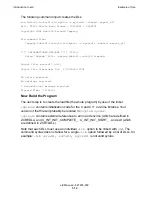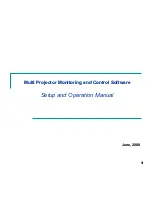
eld Manual—527255-009
1-1
1
Introduction to eld
This section contains the following information topics:
eld Overview
introduces the general functionality of the product.
Native Object Files
introduces the different types of object files.
The Linker Command Stream
shows the conventions for entering tokens (options,
parameters and filenames) on the command line.
Example of Use
presents an example of using
eld
to link a main program and one
DLL.
eld Overview
The primary use of the linker
eld
, in the TNS/E development environments (Guardian,
OSS or PC), is to combine one or more TNS/E position-independent code (PIC) object
files into a new single loadfile.
eld
manipulates both code and data, and then places all of the loadfile’s adjustable
references in tables outside the code to make them available to
rld
, the run-time
loader. This process, called linking, must be applied to linkfiles after they have been
compiled and before they can be loaded for execution.
Linkfiles are produced by a TNS/E compiler or assembler. The new loadfile created by
eld
is either a program or a DLL. A loadfile contains certain information used to bind
references among loadfiles at load time. The linker may also look at other DLLs in
order to resolve references to them at link time (this is called “presetting”). A main
program, together with the DLLs that it needs directly or indirectly, is executed on the
HP NonStop operating system. A file type of 800 indicates that the code can only
execute on the TNS/E HP NonStop operating system platform.
The equivalent product for TNS/R PIC object files is known as
ld
and is documented
in the
ld Manual
.
rld
is the run-time loader that may be used in either TNS/R or TNS/E environments.
rld
is documented in the
rld Manual
.
As Guardian commands are case-insensitive you may use either upper (for example,
ELD
) or lower-case (for example,
eld
) commands to invoke the linker. To comply with
UNIX conventions of lower-case usage, you may only use lowercase in the OSS
environment. This manual mostly uses lower-case versions of the linker names.
PIC native object files are generated by the native C, native C++, native COBOL, and
pTAL compilers. See the following manuals for information about these compilers:
•
C/C++ Programmer’s Guide
•
HP COBOL For NonStop Systems
•
pTAL Reference Manual.
Summary of Contents for eld
Page 4: ......
Page 8: ...Contents eld Manual 527255 009 iv ...
Page 12: ...What s New in This Manual eld Manual 527255 009 viii Changes to the 527255 005 Manual ...
Page 34: ...Introduction to eld eld Manual 527255 009 1 14 Example of Use ...
Page 54: ...eld Input and Output eld Manual 527255 009 2 20 Using Archives ...
Page 98: ...Other eld Processing eld Manual 527255 009 4 20 Merging Source RTDUs ...
Page 242: ...Output Listings and Error Handling eld Manual 527255 009 6 132 Glossary of Errors ...
















































